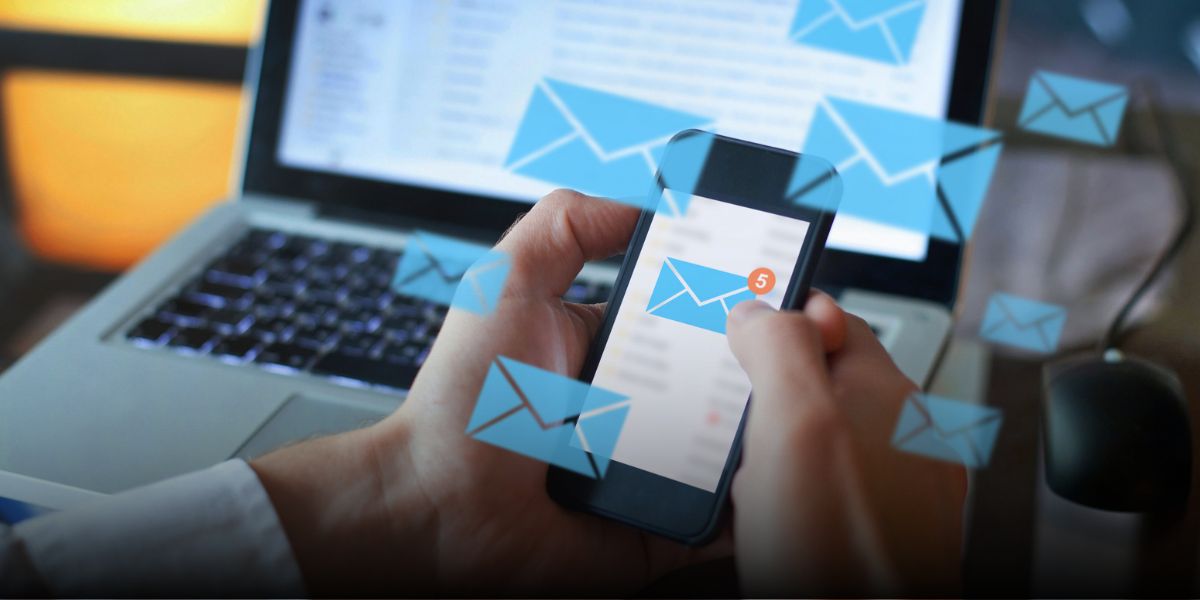Ensure Your Emails Deliver Under the New Yahoo and Google Protections

Let’s play a little “Never Have I Ever.” Take 3 large swallows of water if you have NEVER done any of the following:
- Had multiple email accounts with one being for potential spam emails
- Had at least one day where you read at least one sentence of half your emails
- Freaked out a little when you saw an email from your “bank” and the subject line read, “Your account is on hold.”
Are you closer to meeting your daily water intake goals? I am.
Champions of the Cause
As email recipients, we can empathize with drowning in a sea of unwanted emails.
As senders of emails, we should be first in line to champion the cause of ensuring that our emails are providing valuable, relevant, and wanted information to our contacts. We know that the more unwanted messages our prospects and customers receive, the more we decrease the chance our messages will be read.
Whether our emails get read depends upon the experience that the recipient has every time they open an email. For this reason, email providers Google and Yahoo have begun enforcing new requirements that impact the way they handle unsolicited messages.
What are these changes and what do they mean? How are they going to impact your business? And what do you need to do to stay on the right side of these changes? We’ve got the answers and a few recommendations.
What Are the New Email Changes Being Enforced By Google and Yahoo?
Email is an essential part of daily communication for individual users and for businesses. For over 20 years, Yahoo and Google have been able to stop a majority of spam, phishing, and malware from reaching inboxes. However, the threats being faced are now more complex and pressing than they were before. For this reason, both email providers are enforcing the following requirements of bulk senders:
- Authenticate their email: Senders who send significant volumes of emails must authenticate their emails by verifying their sender identities with standard protocols like SPF, DKIM, and DMARC. This will close loopholes exploited by attackers that threaten everyone who uses email.
- Enable Easy Unsubscription: Senders will need to provide an option to unsubscribe using no more than one click and providers will need to process unsubscription requests within two days.
- Only Sending Emails Users Want: There will now be a clear spam rate threshold (below 0.3%) that senders must stay under to ensure that email recipients aren’t bombarded with unwanted messages.
What Do These Updates Mean For Your Business?
Email deliverability, once a matter of creating engaging content and relevant subject lines, now relies on technical compliance and sender behavior. Your reputation as a sender will ensure that your emails make it to the inbox rather than a spam folder.
(Of course, email subject lines and content will continue to matter and affect your open rates and other metrics, but that won't matter unless you're technically sound.)
If you are in line with meeting all of the requirements, great job! You are considered a legitimate sender by Google and Yahoo.
If you need some help becoming compliant, here are a few resources to get you started:
Managing the New Requirements in HubSpot
HubSpot has not left us hanging to figure out DIY solutions to these new requirements. Here are a few updates already in effect for HubSpot subscribers:
SPF/DMARC for All
- This will add SPF and DMARC records to the 'Connect an Email Sending Domain' flow, and expose the connection status directly in HubSpot. You'll now be able to:
- Copy DMARC and SPF records directly from HubSpot to their DNS
- Check the connection status for DMARC, DKIM, and SPF directly in HubSpot
- Available to Starter, Pro, and Enterprise subscribers
One Click Unsubscribe
- Email headers are updated to be compliant with the one-click unsubscribe requirements
Email Variable Domains
- All marketing and transactional emails sent out of HubSpot that do not use a Connected Email Sending Domain will be subject to a variable domain managed by HubSpot. This will enable the automatic detection and removal of your unauthenticated domain without canceling the send.
In Conclusion
Authentication, one-click unsubscribe, and spam monitoring have been at the top of email best practices for quite some time. While these requirements are not revolutionary changes in best practices, they are being enforced because they are not followed by all senders.
However, compliance with these best practices will improve deliverability and engagement rates as well as foster trust between you and your audience. In the long run, these efforts will translate into a higher ROI for your email marketing campaigns. Stay proactive, stay informed, and consider these changes a step towards building more meaningful relationships with your prospects and customers.
Do you have questions about managing these new requirements? Click on the link below and we'll reach out to see how we can help.

